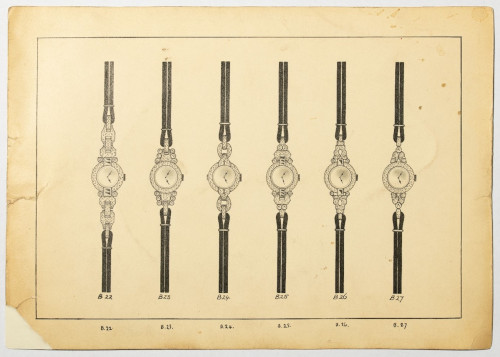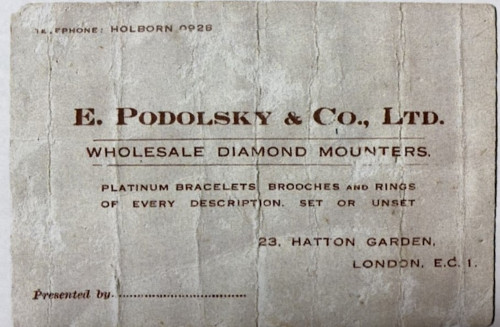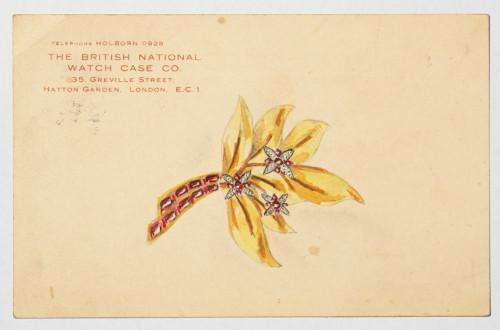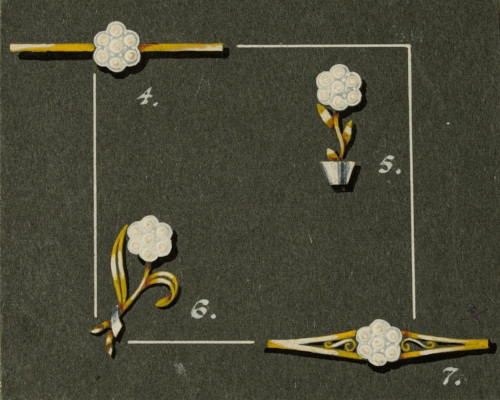Archives Hub feature for October 2022
In 2027 the Goldsmiths’ Company will celebrate 700 years since it received its first royal charter, which formalised the company’s existence as a craft guild.
To mark this anniversary, a programme of cataloguing and digitisation is underway to make the archives more widely accessible. Sharing the catalogues on public forums – such as the Archives Hub – is a vital aspect of this project.
The archives of the Goldsmiths’ Company date back to the 14th century, with the earliest minutes recorded in 1334. The company prides itself on the breadth of its archival collections; with records covering not only the broad administrative past of the company, but also the history of making and retailing in precious metals. The variety in the archives reflects the strong ties between the craft and the company that remain to this day.
The Podolsky Collection is an excellent example of a maker’s archive, recording all aspects of jewellery craft and trade; from design, to the promotion and sale of wares. Spanning from 1920-2010, the series also offers insight into the resilience of the trade and the evolution of style across the decades.
Most of the collection was donated to the archive by Paul Podolsky, a liveryman of the Goldsmiths’ Company with a career in jewellery spanning over 70 years. Throughout his career he worked both as a designer, then as an executive, dedicating himself to the company set up by his father Eyna Podolsky.
Eyna Podolsky, a Ukrainian immigrant and the son of metalworkers, began his career with an apprenticeship with a jeweller at just 12, eventually becoming a skilled diamond mounter, setter and engraver.
He was able to start his own business in 1920 and was so successful he employed around 40 people. Originally diamond mounters and watchcase makers, the firm was first known as The British National Watch Case Co.
Eyna Podolsky was the first man in Britain to go into mass production of platinum and diamond-set wrist watches, which were mainly sold to wholesalers.
The company also had orders for other pieces of jewellery and commissions from some private clients. In total there are over 130 design drawings in the collection, many of which are from the 1920s and 1930s and so are excellent examples of Art Deco work.
Paul Podolsky’s childhood was spent in and out of his father’s workshops, learning techniques from craftspeople long before he officially joined the firm. Despite this upbringing, Paul didn’t initially want to be a jeweller; he left school at 16 to join a commercial art studio in 1939. The outbreak of war soon closed this down, and Paul joined his father’s studio as an apprentice diamond mounter, by which time the business was thriving in its Hatton Garden premises.
The markets depressed during the war and many young jewellers joined the army, leaving an aging workforce. These gaps were supplemented by an influx of Jewish refugees to Hatton Garden leading up to the war. Paul Podolsky recalls craftspeople from all over the former British Empire coming to work in London at this time, including a German-Jewish refugee named ‘Margot’ who joined the Podolsky workshop.
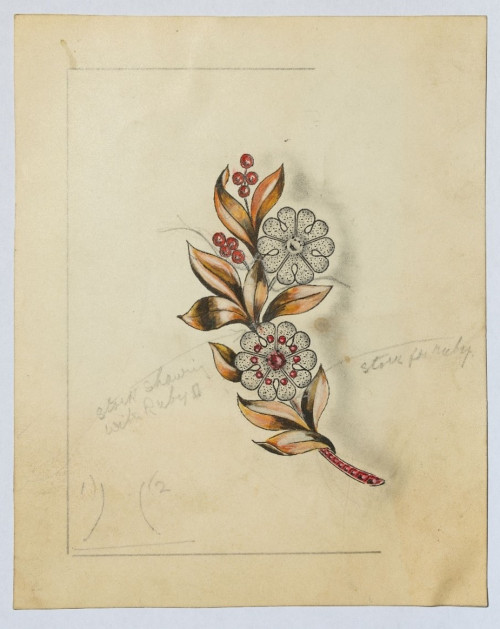
Like many jewellers E. Podolsky & Co. Ltd. switched to supplying for the war effort – using their small tools to create objects such as fuses. Production at times was 24 hours a day with Paul and his colleagues working night shifts.
After his own service in the army (1944-1947), Paul Podolsky took control of the business, and one of his first actions in charge was to acquire the jewellery subdivisions of Birmingham firms Blanckensee and Albion Chain who had decided to concentrate on engineering work after the war.
This new venture had to pivot away from the fine work produced between the wars to produce cheaper 9ct items. Many of the initial designs were drawn by Paul Podolsky himself as he was unable to afford a professional designer. It was a gamble, but his economy paid off, with the company still producing commercial jewellery well into the 1980s.
Further information
The listings for the Paul Podolsky collection are available on Archives Hub: http://archiveshub.jisc.ac.uk/data/gb1990-ppo
The archive is also available to view by appointment at the Goldsmiths Company Library and Archive:
https://www.thegoldsmiths.co.uk/craft/library-research/
Listen to the Goldsmiths’ Company Librarian, Eleni Bide’s talk on Paul Podolsky here: https://vimeo.com/674581225
For further information on the history of the Goldsmiths’ Company:
https://www.thegoldsmiths.co.uk/company/history/history-of-the-company/
Sophie Leverington
Archivist
The Goldsmiths’ Company
Goldsmith’s Hall
Related
Browse The Goldsmiths’ Company Library and Archive descriptions to date on the Archives Hub
All images copyright The Goldsmiths’ Company. Reproduced with the kind permission of the copyright holders.


